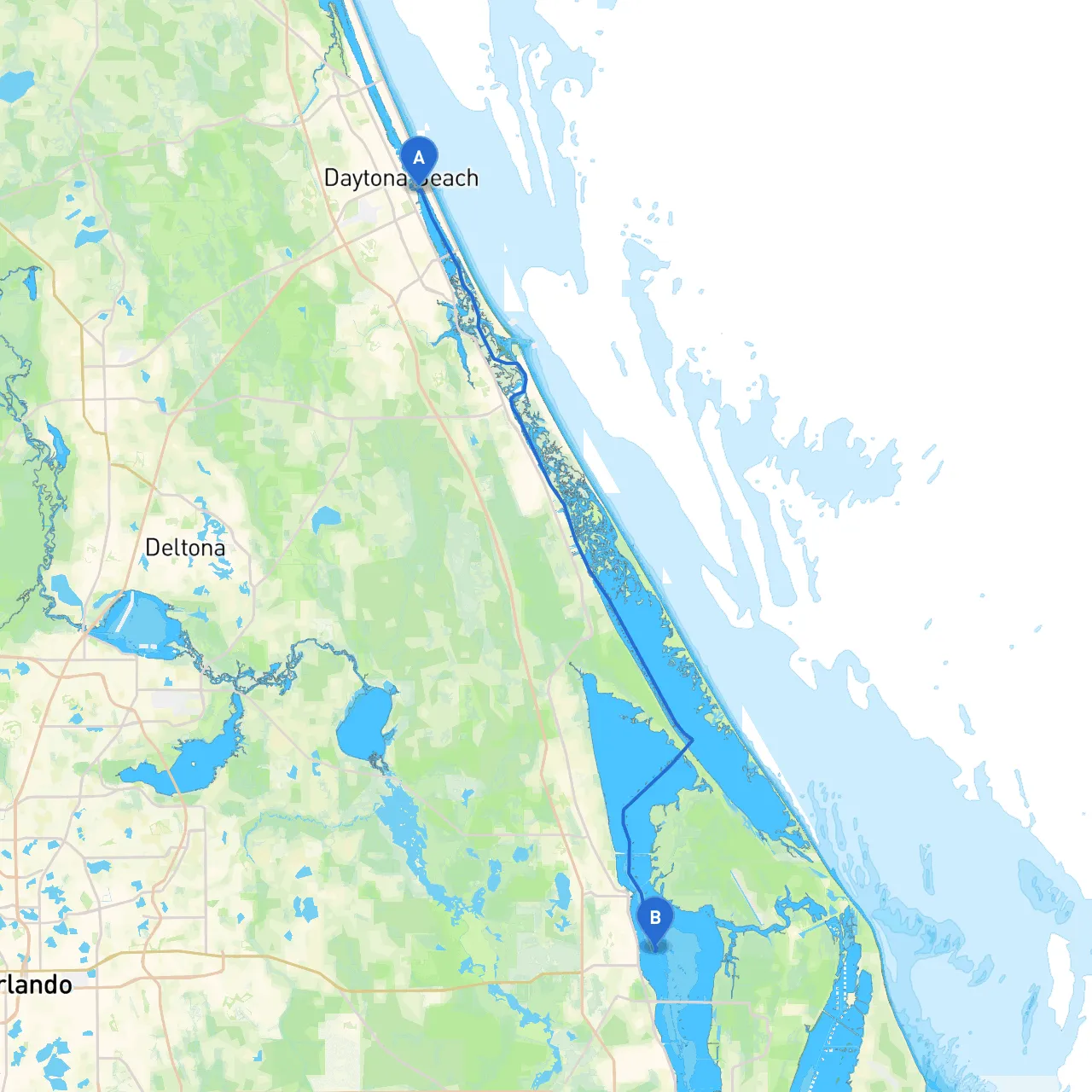

Overview
This boating trip from Daytona Beach to Titusville is a picturesque journey along the East Coast of Florida that combines both relaxation and exploration. While it features stunning waterways and offers glimpses of wildlife and beautiful landscapes, safety is always the priority. The distance between these two vibrant cities is approximately 20 nautical miles, making it a suitable adventure for a range of boaters—specifically those looking for a half-day excursion, family outings, or those who may be less experienced with extended cruising.
1. Setting Off from Daytona Beach
Your adventure kicks off at the bustling banks of Daytona Beach, known for its vibrant atmosphere and rich history. Before you set sail, ensure you familiarize yourself with local weather conditions and tides. Check the NOAA Weather Radio for marine forecasts.
2. Navigating the Halifax River
As you depart Daytona Beach, you'll cruise down the Halifax River. This is a busy waterway, so be vigilant about other boat traffic, jet skis, and fishing vessels. Keep a watchful eye on channel markers as you navigate south.
3. Ponce Inlet
Continuing southward, you’ll approach the Ponce Inlet area—known for its iconic lighthouse. This area also serves as an excellent landmark for navigation.
4. Mosquito Lagoon
As you continue your course, you’ll enter the scenic Mosquito Lagoon. It’s a serene area perfect for spotting manatees and dolphins, staffed with bustling recreational activity—from kayaking and paddleboarding to shallow-draft fishing.
5. Indian River Entrance
Next, you will find yourself on the Indian River. Keep a straight line through the channel and follow the navigational markers closely, as the area can include shallow spots and is also a hub for recreational fishing.
6. Approach to Titusville
As you round the final turn toward Titusville, prepare for your entry into the harbor area. The city is known for the Kennedy Space Center, offering immersion in Florida's rich space history. Consider scheduling your boating trip to coincide with a launch if you’re interested in witnessing this awe-inspiring event from the water!
This pilotage plan not only serves as a guide to ensure a safe and enjoyable trip but also highlights the beautiful coastal scenery and vibrant local culture. Enjoy your boating adventure!